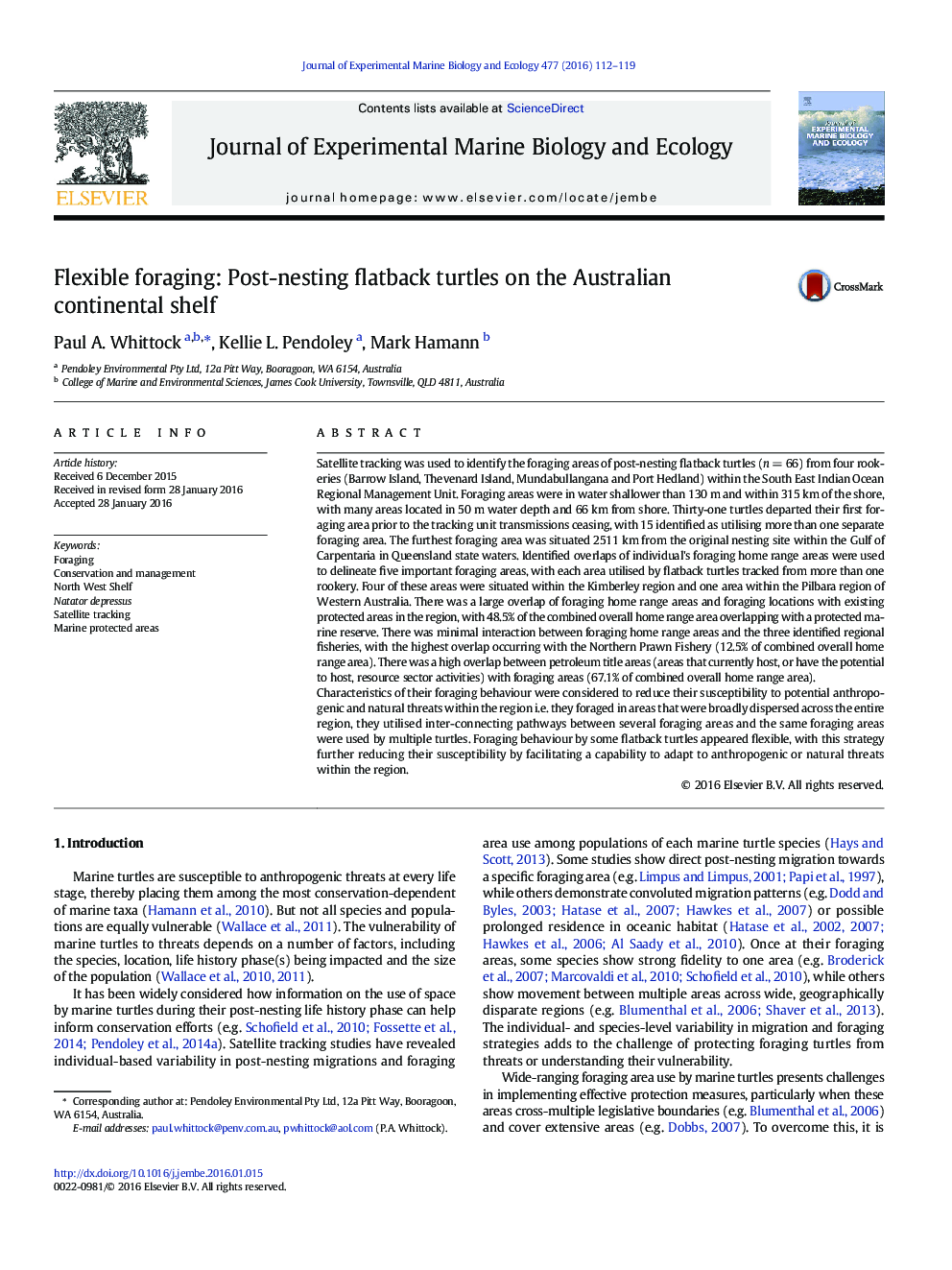| کد مقاله | کد نشریه | سال انتشار | مقاله انگلیسی | نسخه تمام متن |
|---|---|---|---|---|
| 6303766 | 1618398 | 2016 | 8 صفحه PDF | دانلود رایگان |
- Tracking data for foraging flatback turtles from four rookeries within the same Regional Management Unit is presented.
- Flatback turtle foraging areas were situated in water depths <Â 40m and >Â 60km from the coastline.
- Some identified foraging habitat areas were utilised by flatback turtles from all four rookeries.
- The exposure of foraging flatback turtles to threats are discussed in the context of existing protection measures.
Satellite tracking was used to identify the foraging areas of post-nesting flatback turtles (n = 66) from four rookeries (Barrow Island, Thevenard Island, Mundabullangana and Port Hedland) within the South East Indian Ocean Regional Management Unit. Foraging areas were in water shallower than 130 m and within 315 km of the shore, with many areas located in 50 m water depth and 66 km from shore. Thirty-one turtles departed their first foraging area prior to the tracking unit transmissions ceasing, with 15 identified as utilising more than one separate foraging area. The furthest foraging area was situated 2511 km from the original nesting site within the Gulf of Carpentaria in Queensland state waters. Identified overlaps of individual's foraging home range areas were used to delineate five important foraging areas, with each area utilised by flatback turtles tracked from more than one rookery. Four of these areas were situated within the Kimberley region and one area within the Pilbara region of Western Australia. There was a large overlap of foraging home range areas and foraging locations with existing protected areas in the region, with 48.5% of the combined overall home range area overlapping with a protected marine reserve. There was minimal interaction between foraging home range areas and the three identified regional fisheries, with the highest overlap occurring with the Northern Prawn Fishery (12.5% of combined overall home range area). There was a high overlap between petroleum title areas (areas that currently host, or have the potential to host, resource sector activities) with foraging areas (67.1% of combined overall home range area).Characteristics of their foraging behaviour were considered to reduce their susceptibility to potential anthropogenic and natural threats within the region i.e. they foraged in areas that were broadly dispersed across the entire region, they utilised inter-connecting pathways between several foraging areas and the same foraging areas were used by multiple turtles. Foraging behaviour by some flatback turtles appeared flexible, with this strategy further reducing their susceptibility by facilitating a capability to adapt to anthropogenic or natural threats within the region.
Journal: Journal of Experimental Marine Biology and Ecology - Volume 477, April 2016, Pages 112-119
